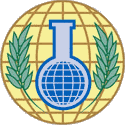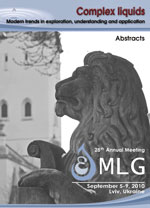An Equilibrium Study of Urea Denaturation of Trp-Cage Miniprotein
Dietmar Paschek
Urea is commonly used to denature proteins and its molecular mechanism is a subject of considerable debate. Previous simulation studies have sought to elucidate the mechanism of urea denaturation by focusing on the pathway of denaturation, rather than examine the effect of urea on the folding/unfolding equilibrium.
Extending our previous simulation work [1, 2], we report the reversible folding/unfolding equilibrium of Trp-cage miniprotein in presence of urea using all-atom replica exchange molecular dynamics (REMD) simulations, compiling more than 30 microseconds worth of trjecory data. The simulations capture the experimental linear dependence of unfolding free energy on urea concentration.
We now have a picture for how urea denatures proteins. We find that the denaturation is essentially driven by favorable direct interaction of urea with the protein, through both electrostatic and van der Waals forces. The unfolded ensemble depends qualitatively on urea concentration, with greater urea concentration favoring conformations with greater solvent exposure. The unfolded state is also characterized by a more favorable interaction with urea than the folded ensemble, which provides an enthalpic driving force for unfolding.
Using present simulation techniques and parallel computing power, we have characterized the protein-solvent inter- actions in a two-solvent system and studied the effects on protein conformation. This study can be easily extended to other denaturants to obtain insights into their mechanism. A challenging extension will be to study the compensating effect on protein stability in a mixed-osmolyte system, for e.g Urea-TMAO-Water.
References
- D. Paschek, H. Nymeyer, and A. E. Garc ́ıa, J. Struct. Biol. 157, 524 (2007).
- D. Paschek, S. Hempel, and A. E. Garc ́ıa, Proc. Natl. Acad. Sci. USA 105, 17754 (2008).



